On View
Visitors Take a Big Bite Out of Performance Artist Bobby Baker’s Edible Installation at Tate Britain
The feminist artwork takes a playful look at the domestic experience.
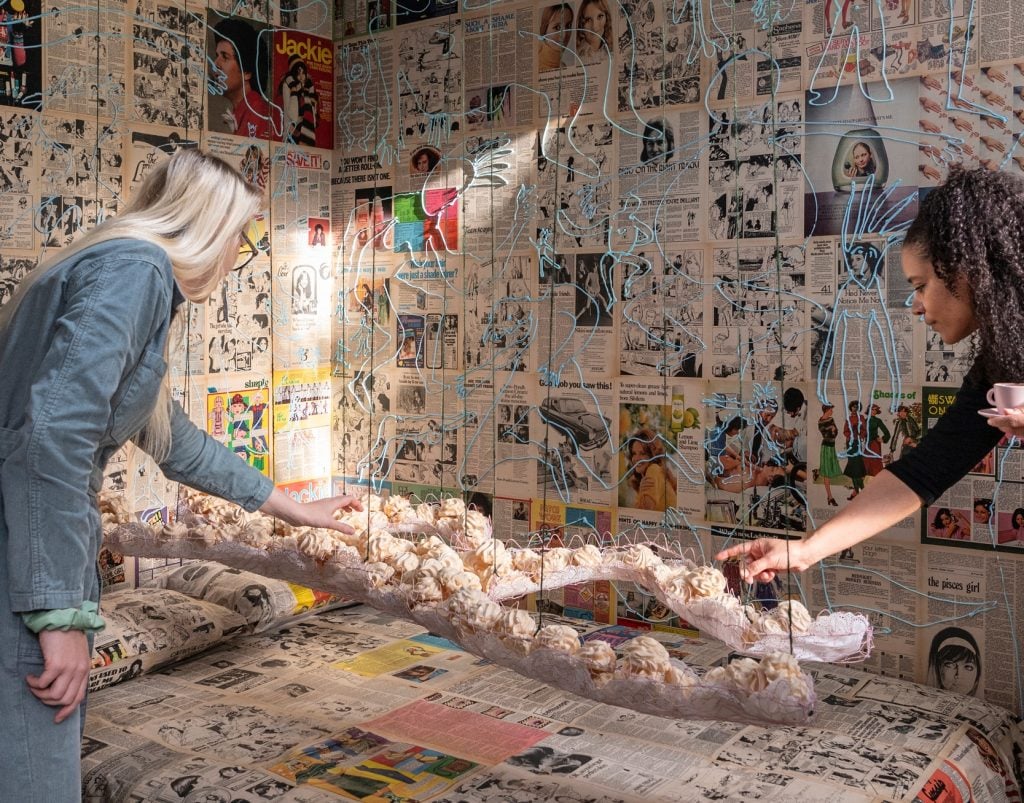
The feminist artwork takes a playful look at the domestic experience.

Jo Lawson-Tancred

Strolling through the door of a what appears to be a typical East London apartment, which has been transported onto the grounds of Tate Britain, visitors are met with a familiar domestic scene. A teenage daughter is lying on her bed listening to music, while her brother takes a bath. In the living room, their father is slumped in front of the television next to a baby resting in its cot, while their mother hovers near the kitchen. If anything is amiss, it could only be that the entire family is made out of meringue, cookies, and cake… and visitors are welcome to have a slice.
No, this is not an episode of The Great British Bake Off. It is a recreation of An Edible Family in a Mobile Home, originally done in 1976 by the performance artist Bobby Baker. Like many women artists of her generation, Baker decided to lift the curtain on everyday life within the domestic sphere, but as always through a playful lens.
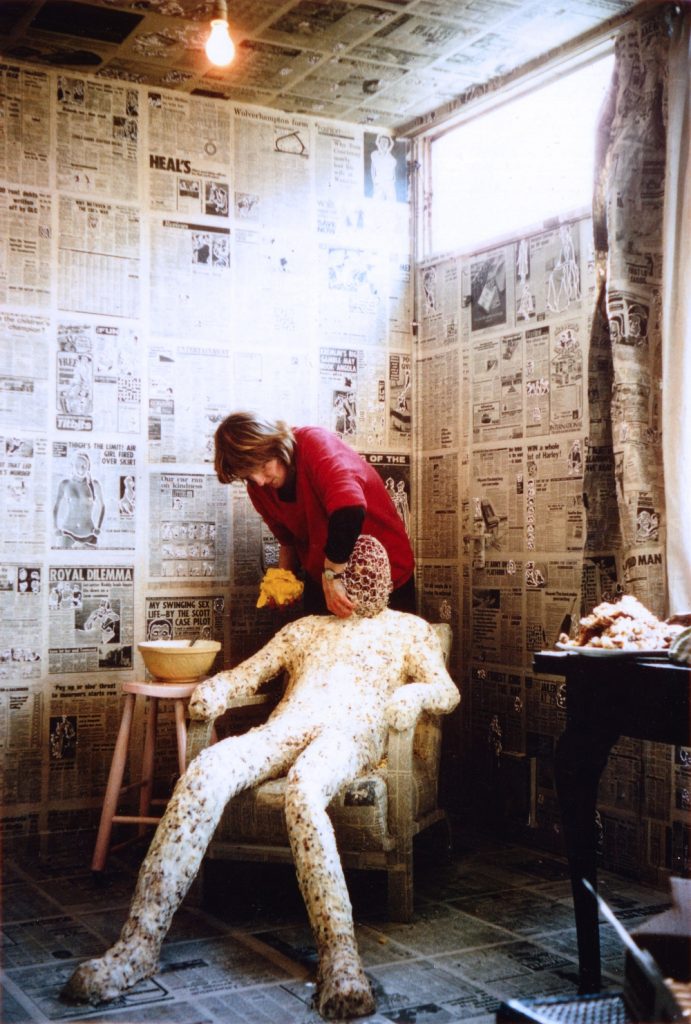
Documentation of preparation by Bobby Baker of An Edible Family in a Mobile Home (1976). Photo: Andrew Whittuck.
Using her own home in the working-class neighborhood of Stepney, Baker recreated a typical family using fruitcake for the father, coconut cake for the baby, garibaldi biscuits for the son sprawled in a murky bathwater of chocolate cake, and meringues to make the daughter. The mother, meanwhile, was represented by a pink dressmaker’s mannequin with an elegantly feminine silhouette but a teapot in the place of her head. Her abdomen was hollowed out to make compartments containing snacks. Locals were welcomed to come in and eat slices of the cake family while Baker politely served cups of tea.
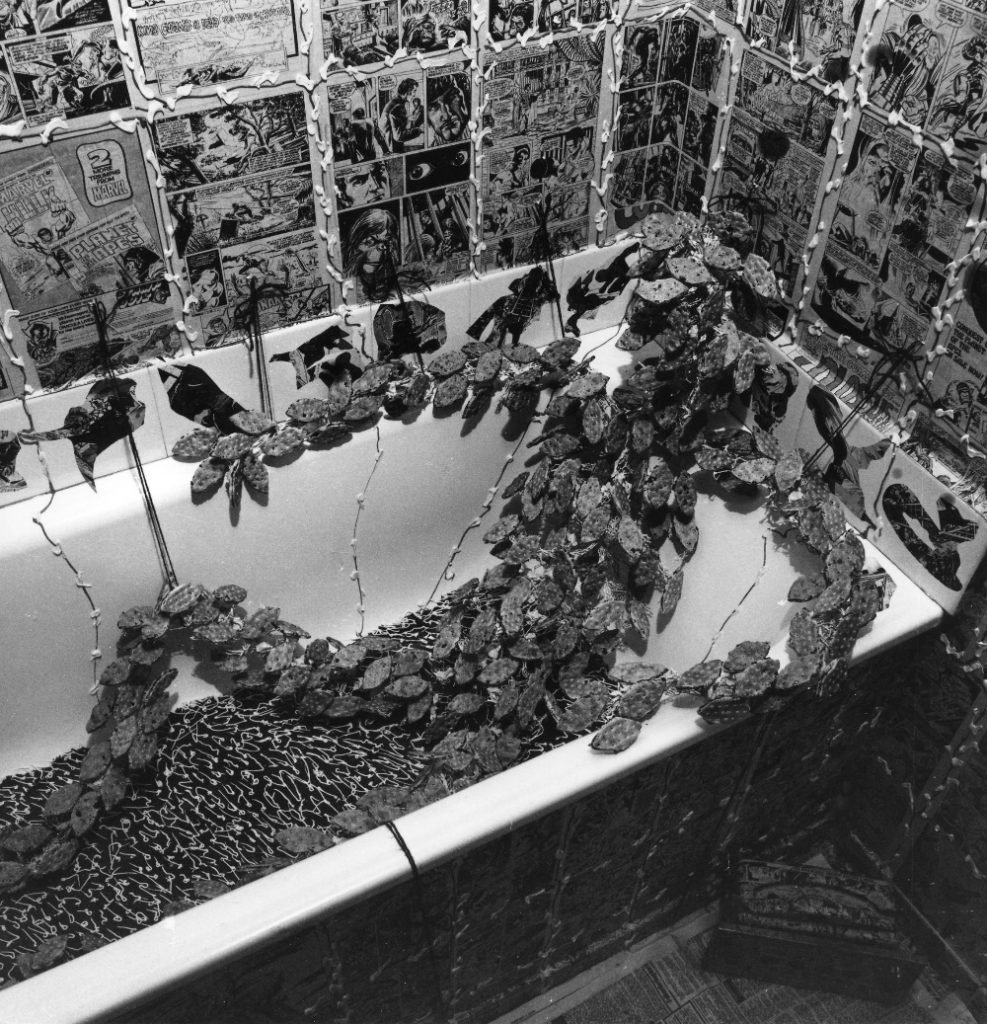
Son in the bath from Bobby Baker, An Edible Family in a Mobile Home (1976). Photo: Andrew Whittuck.
Aged 25 at the time that she made the original, Baker was inspired by works like The Store (1961), by Claes Oldenburg and his then-wife Patty Mucha. Instead of selling through the gallery system, the couple made a mock storefront offering painted plaster sculptures of pastries and other food items. As for Baker’s use of real cake? Since 1973, she had been hand-piping her Meringue Ladies World Tour, a band of women characters who perform and dance with Baker before meeting an untimely end. “It was my own language,” she recently recalled in an interview with curator Gemma Lloyd. “It was humble, and pathetic, and it got destroyed. It felt subversive and anarchic.”
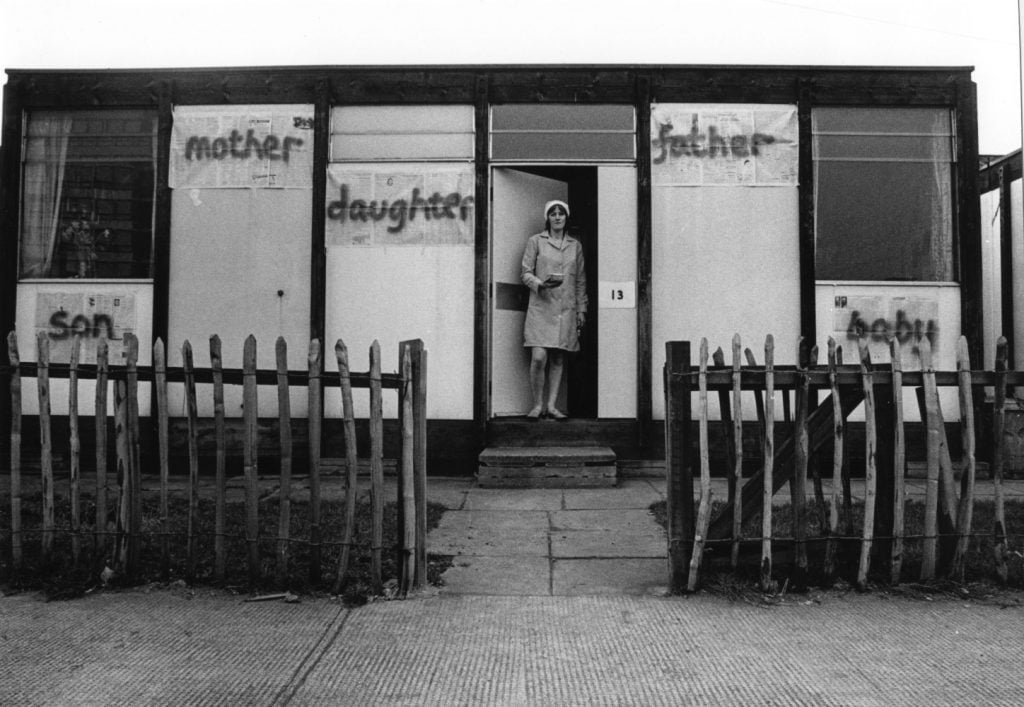
The exterior of Bobby Baker’s An Edible Family in a Mobile Home (1976). Photo: Andrew Whittuck.
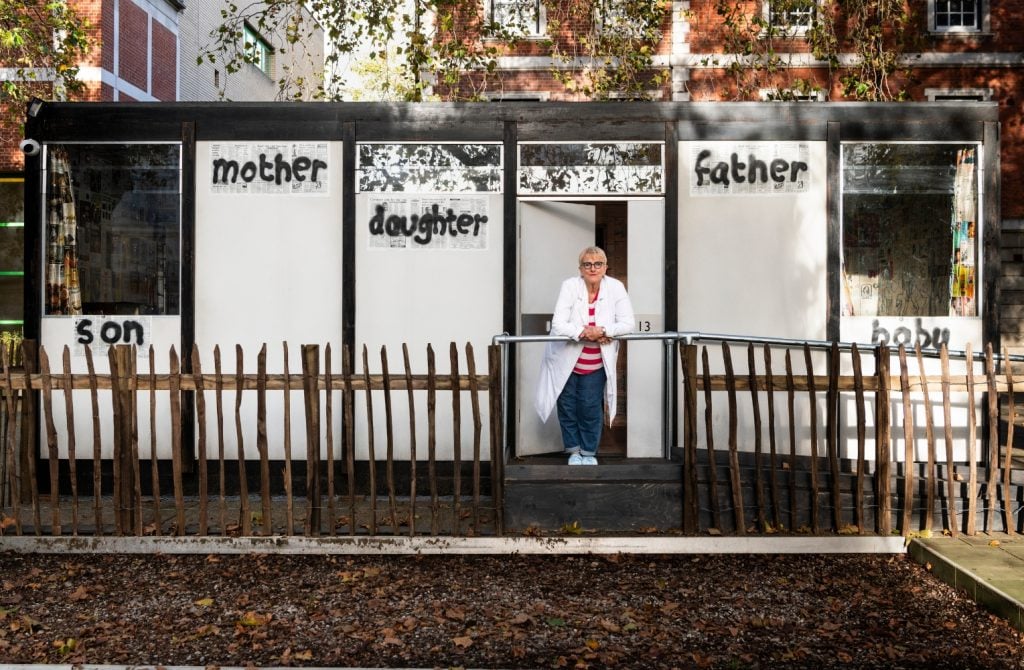
Portrait of Bobby Baker with An Edible Family in a Mobile Home recreated in 2023 at Tate Britain. Photo: Madeleine Buddo, © Tate.
Feeling like an outsider would in some ways be liberating for Baker. “I’d abandoned the traditional art world because I found it elitist, sexist, and had discovered performance art where I was welcomed and free to do what I wanted,” she said. “I’ve always wanted to make work that people see in and around their own environments. I was living in an area surrounded by families and young children that I wanted to acknowledge.”
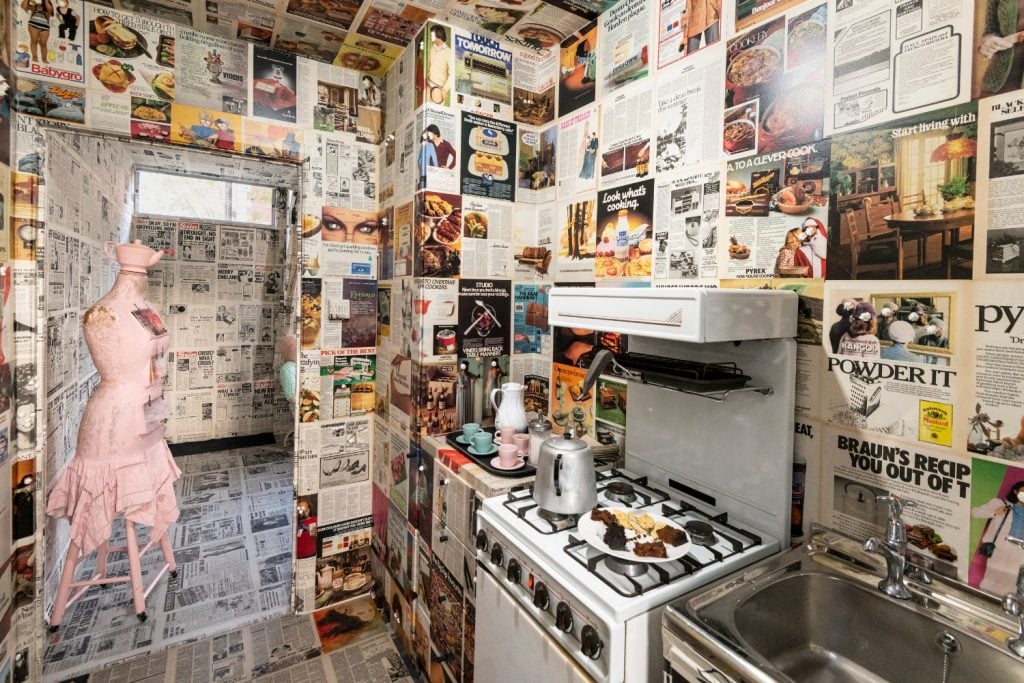
Inside Bobby Baker, An Edible Family in a Mobile Home recreated in 2023 at Tate Britain. Photo: Madeleine Buddo, © Tate.
Though Baker’s original was made single-handedly over the course of a month, a big team came together to recreate the work for Tate Britain, using cake from the bespoke bakery Lili Vanilli. Just like in the original, the walls are pasted with newspapers, teen magazines, and comic books from the year 1976, and these were covered in line-drawings made with hand-piped icing. Over the course of each of the exhibit’s two runs, this fall and next spring, visitors are invited to eat their way through the cake family, after which the mother will continue to provide pre-packaged snacks.
Baker’s edible family home accompanies Tate Britain’s new exhibition “Women in Revolt! Art and Activism in the U.K. 1970–1990,” which opened November 8 and runs through April 7. A riotous celebration of second-wave feminism as expressed through painting, photography, writing, posters, and film, it also spotlights how many artists made visible the experiences of women of color, queer, and trans women, and campaigned for equal rights.
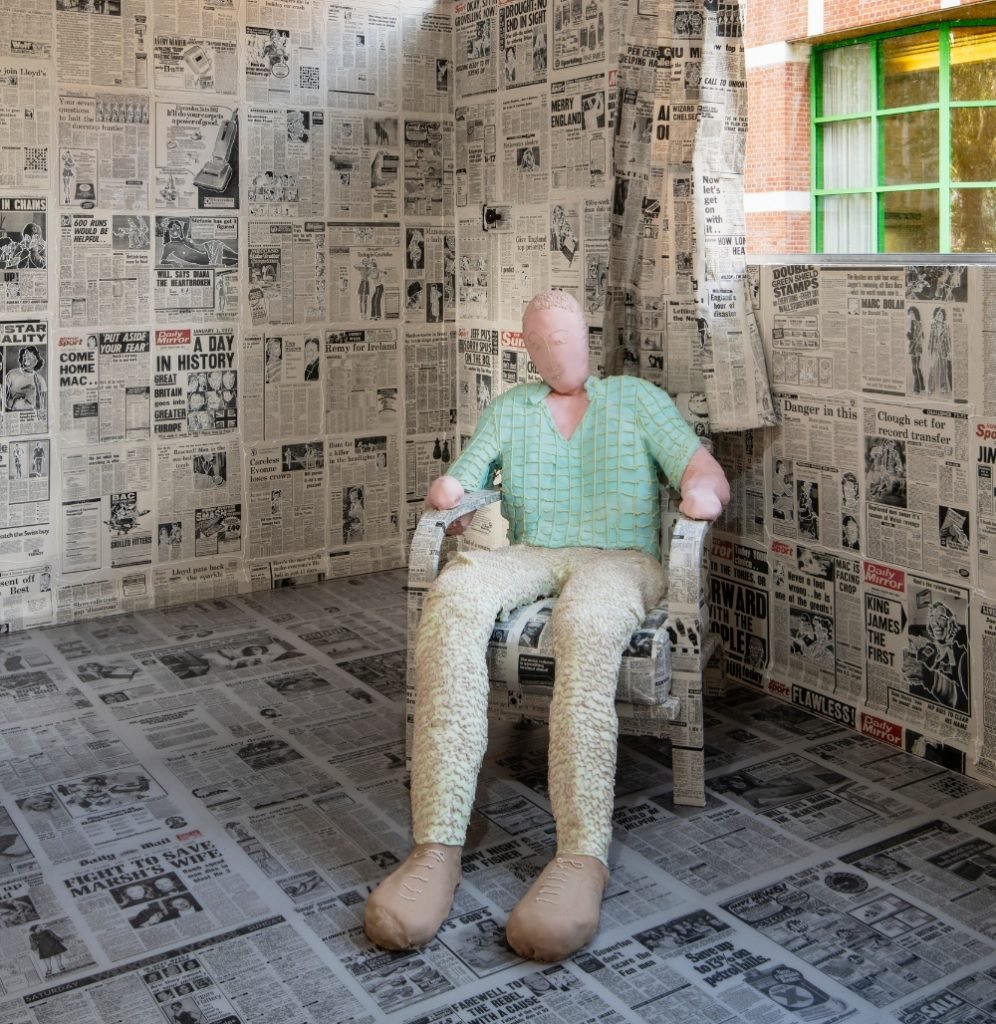
Inside Bobby Baker, An Edible Family in a Mobile Home recreated in 2023 at Tate Britain. Photo: Madeleine Buddo, © Tate.
Installed on Tate Britain’s South Lawn, Baker’s edible family is free to visit and is open to the public for the first four weeks of the exhibition (through December 3) and again for the final four weeks (March 8–April 7, 2024). After this, the work will be given to Idle Women, an arts, environment, and social justice collaboration based in Lancashire, northern England, which will repurpose the structure. “I didn’t want it to end up in a sculpture park,” Baker explained, “it’s got to be used for women living now.”
More Trending Stories:
Revealed: The Major Mystery Consignors of New York’s Multi-Billion-Dollar Fall Auction Season
Christie’s Pulled Two Works by a Prominent Middle Eastern Artist From Sale After a Complaint